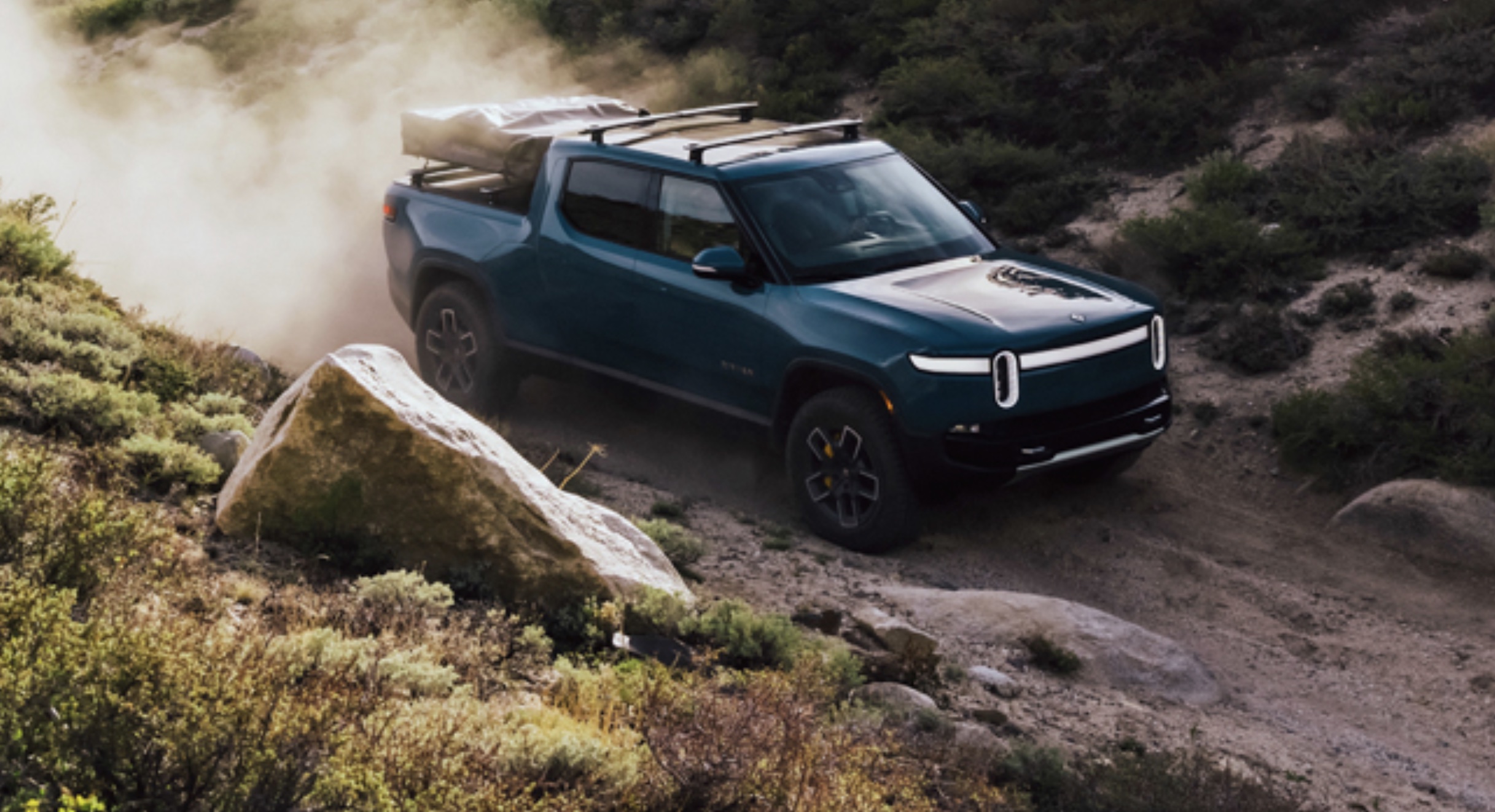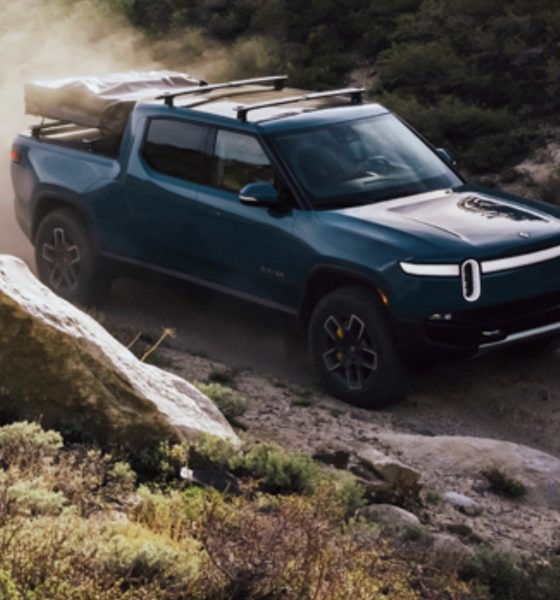There is no longer a Ford Motor Company representative on Rivian’s board of directors. However, Ford still seems to have a strong partnership with the company.
Based on Rivian SEC documents released to the public on October 1, Ford executive Alexandra Ford English left the EV startup’s board of directors in May 2021, a year after being appointed. In March 2021, the legacy OEM announced that English would join Ford’s board in a press release. She was officially elected to Ford’s board by May.
In June 2021, Ford Vice President Doug Power became the legacy automaker’s representative on Rivian’s board of directors, replacing English. However, he also left Rivian’s board a few months later in September.
“Rivian is a strategic investment, and we’re still exploring ways for potential collaboration with them. We don’t have anything to announce today,” Ford spokesman Ian Thibodeau said.
Rivian declined to comment beyond the SEC filings. The document does acknowledge that certain stockholders will have a conflict of interest. Ford holds more than 5% of Rivian’s capital stock, according to the filing. In 2019, the OEM invested $500 million in Rivian. And according to Reuters, Ford has invested more than $820 million in Rivian over two fundraising rounds.
“Certain of our principal stockholders or their affiliates are or may in the future engage in, and certain of our directors are affiliated with entities that may in the future engage in, business activities similar to those conducted by us which may compete directly or indirectly with us, causing such stockholders or persons to have conflicts of interest,” wrote Rivian in its SEC filings.
“Certain of our principal stockholders and their affiliates are engaged in similar business activities to those conducted by us, and/or currently or in the future may invest in or otherwise hold securities of businesses that compete directly or indirectly with us. For example, Ford Motor Company (“Ford”), one of our principal stockholders, is a multinational vehicle manufacturer,” the document stated.
Rivian seems to understand its complex relationship with some investors based on the excerpts mentioned above from the SEC document. While there is no Ford representative on the Rivian board currently, the filing suggests that there could still be one in the future.
“Further, following this offering, employees of certain of our principal stockholders and their affiliates will continue to serve on our board of directors and retain their positions with our principal stockholders or their affiliates,” the filing read.
Other information from the SEC filing hints that Ford and Rivian’s relationship is far from over. For instance, Rivian stated that it entered into a Production and Supply Agreement with Ford subsidiary Troy Design and Manufacturing Co. (TDM). Based on the agreement, TDM would serve as an ongoing supplier to Rivian.
In addition, Rivian issued unsecured 2021 Convertible Notes to Ford and certain other investors in the aggregate principle amount of $2.5 billion. The said notes mature on July 23, 2026, and accrue interest quarterly at the following rates: (a) 0% from the date of issuance to and including June 30, 2022; (b) 5% after June 30, 2022.
The Teslarati team would appreciate hearing from you. If you have any tips, reach out to me at maria@teslarati.com or via Twitter @Writer_01001101.

News
Tesla FSD fleet is nearing 7 billion total miles, including 2.5 billion city miles
As can be seen on Tesla’s official FSD webpage, vehicles equipped with the system have now navigated over 6.99 billion miles.

Tesla’s Full Self-Driving (Supervised) fleet is closing in on almost 7 billion total miles driven, as per data posted by the company on its official FSD webpage.
These figures hint at the massive scale of data fueling Tesla’s rapid FSD improvements, which have been quite notable as of late.
FSD mileage milestones
As can be seen on Tesla’s official FSD webpage, vehicles equipped with the system have now navigated over 6.99 billion miles. Tesla owner and avid FSD tester Whole Mars Catalog also shared a screenshot indicating that from the nearly 7 billion miles traveled by the FSD fleet, more than 2.5 billion miles were driven inside cities.
City miles are particularly valuable for complex urban scenarios like unprotected turns, pedestrian interactions, and traffic lights. This is also the difference-maker for FSD, as only complex solutions, such as Waymo’s self-driving taxis, operate similarly on inner-city streets. And even then, incidents such as the San Francisco blackouts have proven challenging for sensor-rich vehicles like Waymos.
Tesla’s data edge
Tesla has a number of advantages in the autonomous vehicle sector, one of which is the size of its fleet and the number of vehicles training FSD on real-world roads. Tesla’s nearly 7 billion FSD miles then allow the company to roll out updates that make its vehicles behave like they are being driven by experienced drivers, even if they are operating on their own.
So notable are Tesla’s improvements to FSD that NVIDIA Director of Robotics Jim Fan, after experiencing FSD v14, noted that the system is the first AI that passes what he described as a “Physical Turing Test.”
“Despite knowing exactly how robot learning works, I still find it magical watching the steering wheel turn by itself. First it feels surreal, next it becomes routine. Then, like the smartphone, taking it away actively hurts. This is how humanity gets rewired and glued to god-like technologies,” Fan wrote in a post on X.
News
Tesla starts showing how FSD will change lives in Europe
Local officials tested the system on narrow country roads and were impressed by FSD’s smooth, human-like driving, with some calling the service a game-changer for everyday life in areas that are far from urban centers.

Tesla has launched Europe’s first public shuttle service using Full Self-Driving (Supervised) in the rural Eifelkreis Bitburg-Prüm region of Germany, demonstrating how the technology can restore independence and mobility for people who struggle with limited transport options.
Local officials tested the system on narrow country roads and were impressed by FSD’s smooth, human-like driving, with some calling the service a game-changer for everyday life in areas that are far from urban centers.
Officials see real impact on rural residents
Arzfeld Mayor Johannes Kuhl and District Administrator Andreas Kruppert personally tested the Tesla shuttle service. This allowed them to see just how well FSD navigated winding lanes and rural roads confidently. Kruppert said, “Autonomous driving sounds like science fiction to many, but we simply see here that it works totally well in rural regions too.” Kuhl, for his part, also noted that FSD “feels like a very experienced driver.”
The pilot complements the area’s “Citizen Bus” program, which provides on-demand rides for elderly residents who can no longer drive themselves. Tesla Europe shared a video of a demonstration of the service, highlighting how FSD gives people their freedom back, even in places where public transport is not as prevalent.
What the Ministry for Economic Affairs and Transport says
Rhineland-Palatinate’s Minister Daniela Schmitt supported the project, praising the collaboration that made this “first of its kind in Europe” possible. As per the ministry, the rural rollout for the service shows FSD’s potential beyond major cities, and it delivers tangible benefits like grocery runs, doctor visits, and social connections for isolated residents.
“Reliable and flexible mobility is especially vital in rural areas. With the launch of a shuttle service using self-driving vehicles (FSD supervised) by Tesla in the Eifelkreis Bitburg-Prüm, an innovative pilot project is now getting underway that complements local community bus services. It is the first project of its kind in Europe.
“The result is a real gain for rural mobility: greater accessibility, more flexibility and tangible benefits for everyday life. A strong signal for innovation, cooperation and future-oriented mobility beyond urban centers,” the ministry wrote in a LinkedIn post.
News
Tesla China quietly posts Robotaxi-related job listing
Tesla China is currently seeking a Low Voltage Electrical Engineer to work on circuit board design for the company’s autonomous vehicles.

Tesla has posted a new job listing in Shanghai explicitly tied to its Robotaxi program, fueling speculation that the company is preparing to launch its dedicated autonomous ride-hailing service in China.
As noted in the listing, Tesla China is currently seeking a Low Voltage Electrical Engineer to work on circuit board design for the company’s autonomous vehicles.
Robotaxi-specific role
The listing, which was shared on social media platform X by industry watcher @tslaming, suggested that Tesla China is looking to fill the role urgently. The job listing itself specifically mentions that the person hired for the role will be working on the Low Voltage Hardware team, which would design the circuit boards that would serve as the nervous system of the Robotaxi.
Key tasks for the role, as indicated in the job listing, include collaboration with PCB layout, firmware, mechanical, program management, and validation teams, among other responsibilities. The role is based in Shanghai.
China Robotaxi launch
China represents a massive potential market for robotaxis, with its dense urban centers and supportive policies in select cities. Tesla has limited permission to roll out FSD in the country, though despite this, its vehicles have been hailed as among the best in the market when it comes to autonomous features. So far, at least, it appears that China supports Tesla’s FSD and Robotaxi rollout.
This was hinted at in November, when Tesla brought the Cybercab to the 8th China International Import Expo (CIIE) in Shanghai, marking the first time that the autonomous two-seater was brought to the Asia-Pacific region. The vehicle, despite not having a release date in China, received a significant amount of interest among the event’s attendees.










